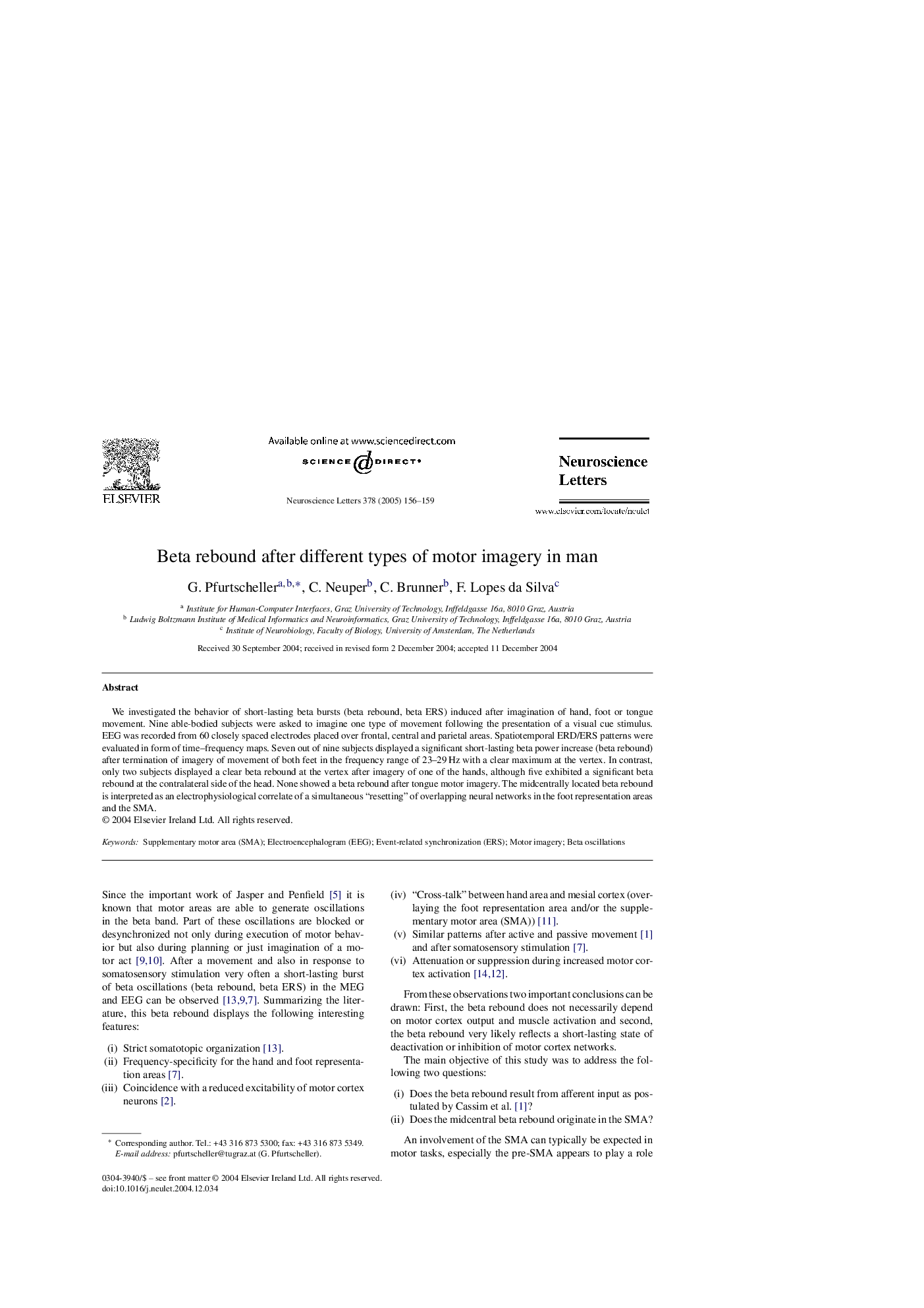| Article ID | Journal | Published Year | Pages | File Type |
|---|---|---|---|---|
| 9429270 | Neuroscience Letters | 2005 | 4 Pages |
Abstract
We investigated the behavior of short-lasting beta bursts (beta rebound, beta ERS) induced after imagination of hand, foot or tongue movement. Nine able-bodied subjects were asked to imagine one type of movement following the presentation of a visual cue stimulus. EEG was recorded from 60 closely spaced electrodes placed over frontal, central and parietal areas. Spatiotemporal ERD/ERS patterns were evaluated in form of time-frequency maps. Seven out of nine subjects displayed a significant short-lasting beta power increase (beta rebound) after termination of imagery of movement of both feet in the frequency range of 23-29Â Hz with a clear maximum at the vertex. In contrast, only two subjects displayed a clear beta rebound at the vertex after imagery of one of the hands, although five exhibited a significant beta rebound at the contralateral side of the head. None showed a beta rebound after tongue motor imagery. The midcentrally located beta rebound is interpreted as an electrophysiological correlate of a simultaneous “resetting” of overlapping neural networks in the foot representation areas and the SMA.
Keywords
Related Topics
Life Sciences
Neuroscience
Neuroscience (General)
Authors
G. Pfurtscheller, C. Neuper, C. Brunner, F. Lopes da Silva,
